Innovative Method of Conservative Aesthetic Treatment for Gingival Recession
Deepti Dhingra1, Ashok Kumar Gupta2, Harmeet Singh3
1 Reader, Department of Conservative Dentistry and Endodontics, Desh Bhagat Dental College and Hospital, Muktsar, Punjab, India.
2 Reader, Department of Oral and Maxillofacial Surgery, JCD Dental College and Hospital, Sirsa, India.
3 Assistant Professor, Department of Conservative Dentistry and Endodontics, Institute of Dental Sciences, Jammu, India.
NAME, ADDRESS, E-MAIL ID OF THE CORRESPONDING AUTHOR: Dr. Deepti Dhingra, 5 Urban Estate, Kapurthala, Punjab-144601, India.
E-mail: drdeeptidhingra@gmail.com
Abrasion, Grafts, Gingival recession, Laminates, Veneers
A 50-year-old male patient reported to the OPD of Desh Bhagat Dental College and Hospital, Muktsar, Punjab with a chief complaint of sensitivity to cold in all the teeth. Upon clinical examination generalised gingival recession was seen in upper and lower arch from first molar of one side to the first molar of other side. On taking detailed history, the etiology of recession was found to be faulty tooth brushing technique. Various treatment modalities were considered to treat the same. It was finally decided to use an innovative method to restore teeth by adding ceramic tints to traditional composite resin.
Pre operative photograph of patient was taken [Table/Fig-1]. Then gingival shade was determined with the help of Vita Akzent shade guide [Table/Fig-2]. After that ceramic tint powder (no. 703 and 704, Vita GmbH and Co. KG Germany) was taken in a well to match the shade of gingiva. Only 1-2 drops of dentin bonding agent were added to dissolve the ceramic tint in it. Composite resin material of selected shade was added to the mixture; till a thick paste consistency was achieved [Table/Fig-3]. Then the teeth were etched with 37% phosphoric acid [Table/Fig-4] following which bonding agent was applied and cured [Table/Fig-5]. The composite resin with ceramic tint was then applied and final curing was done followed by finishing and polishing [Table/Fig- 6]. Gingival recession is a commonly encountered problem in routine dental practice. It is more prevalent in older people and in males as compared to females [1]. Main etiological factors for gingival recession are periodontal diseases, mechanical forces such as occlusal trauma and aggressive use of tooth brush, iatrogenic factors such as orthodontic treatment and subgingival crown preparations and anatomical factors such as tooth position, high frenum attachment etc., [2]. Malpositioned teeth and toothbrush trauma are major contributing factors to gingival recession [1]. Various treatment modalities have been proposed for treating gingival recession [3]. These can be broadly classified into:
Pre operative photograph showing generalized gingival recession.
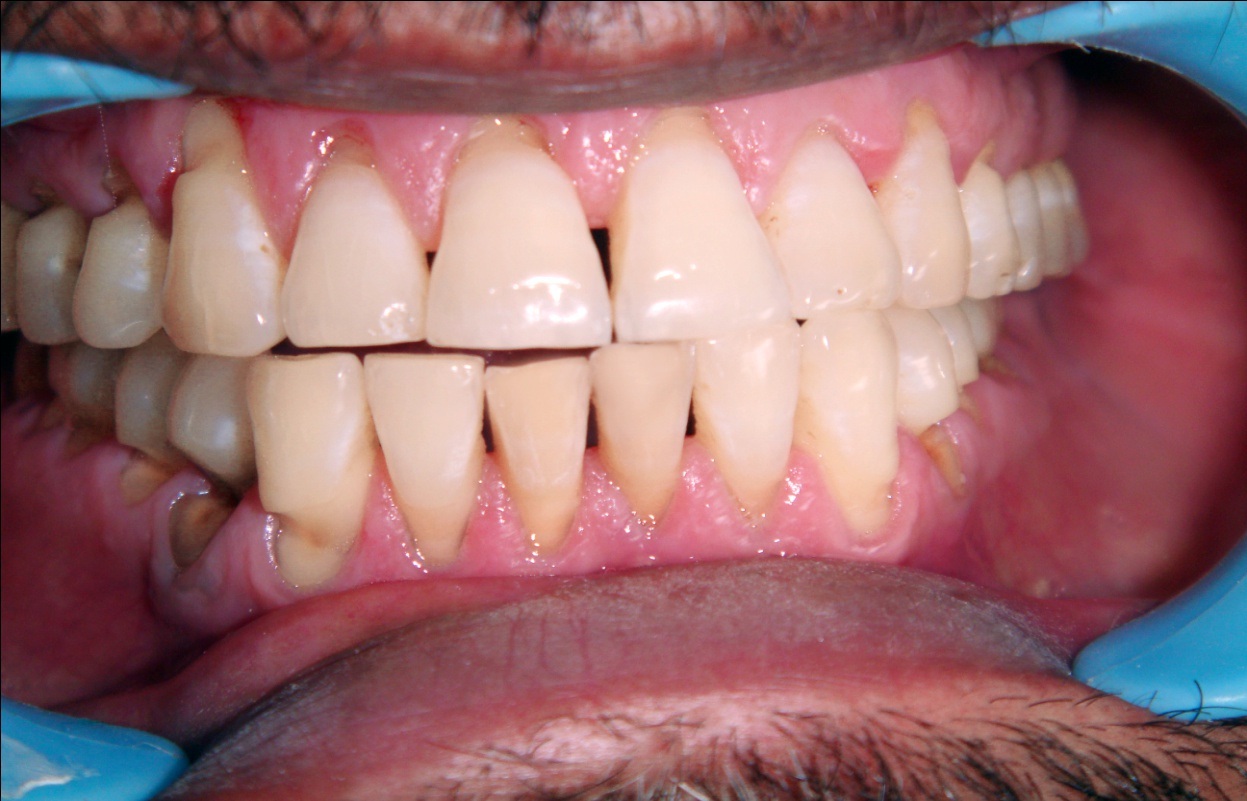
Matching the shade of gingiva with shade guide.
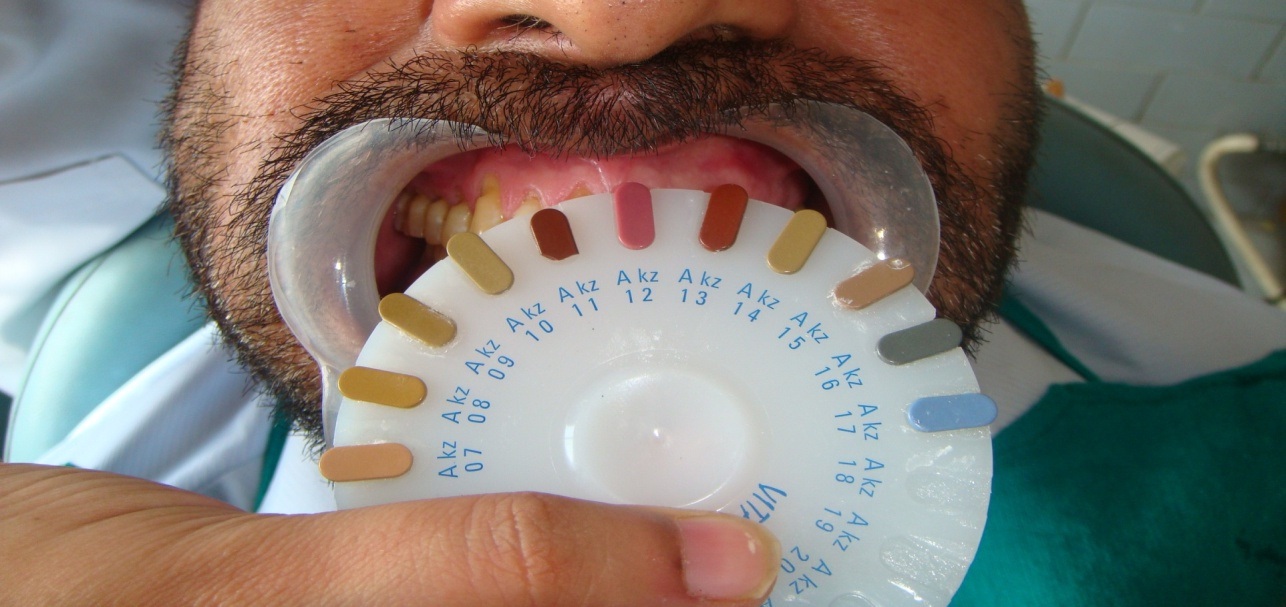
Mixing the colored bonding agent to conventional composite.
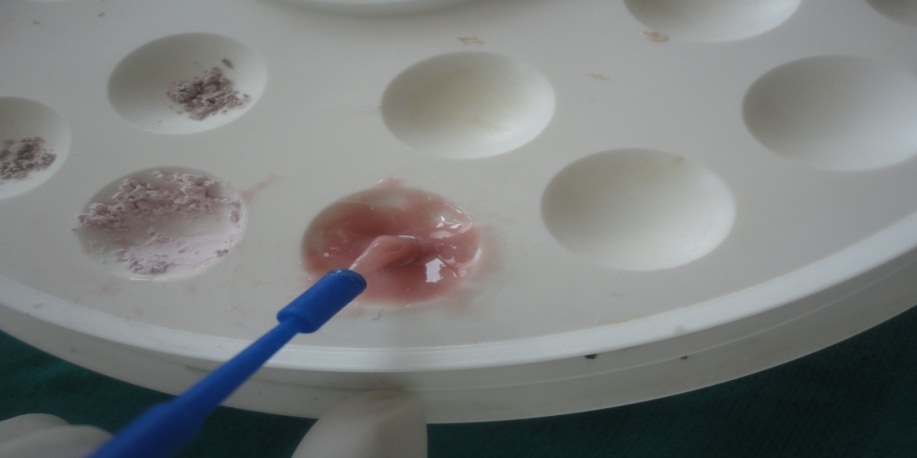
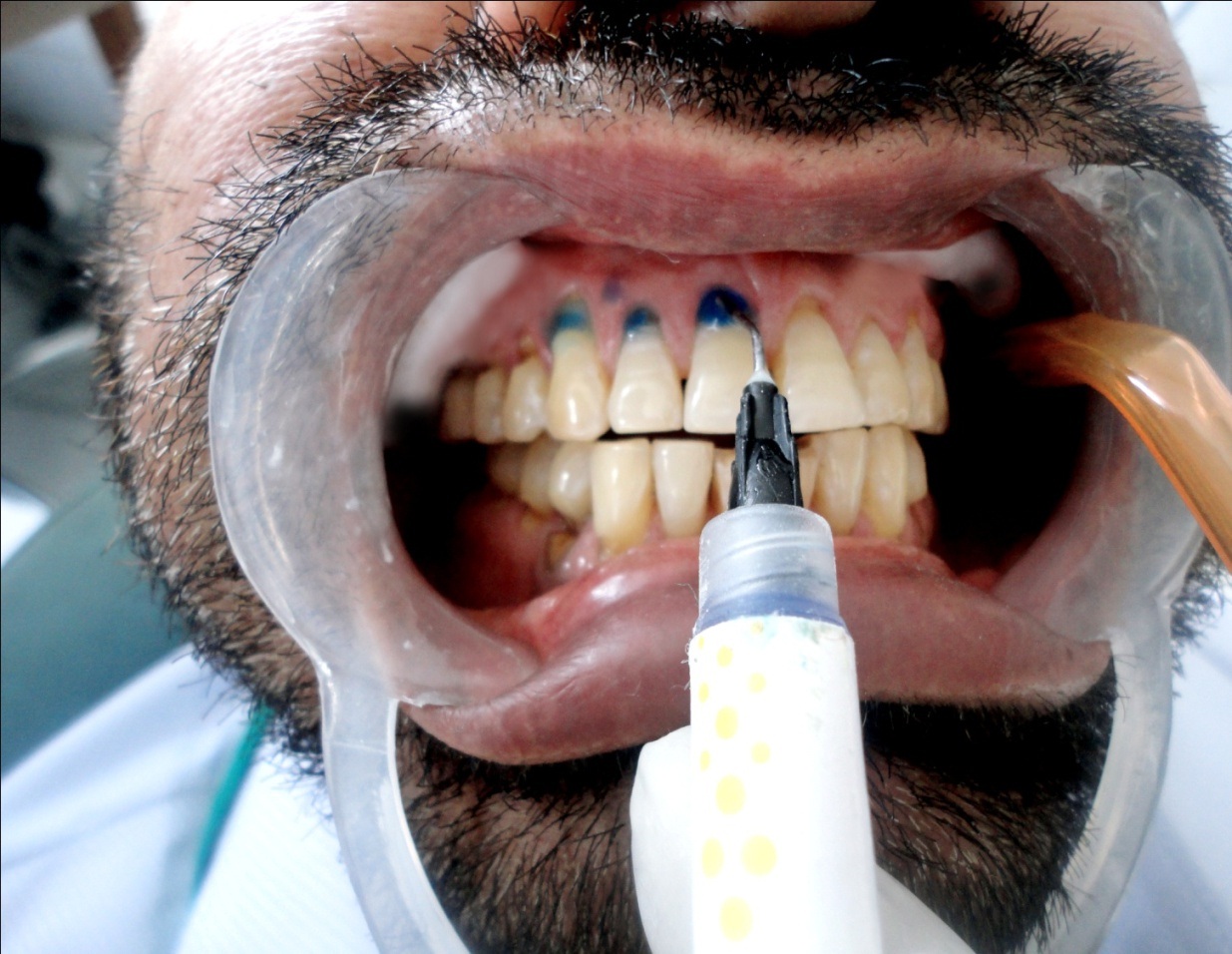
Bonding agent application.
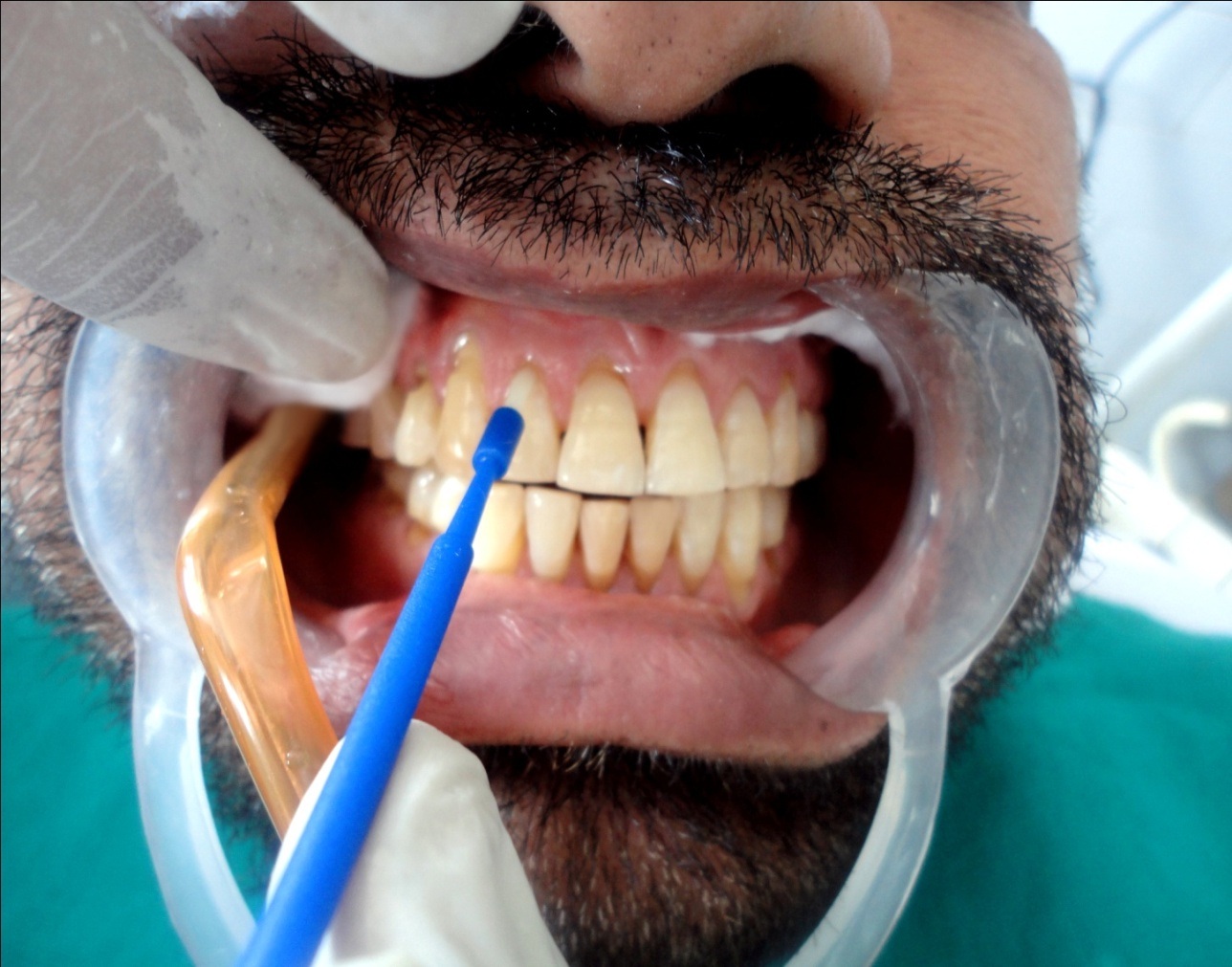
Immediate post operative photograph.
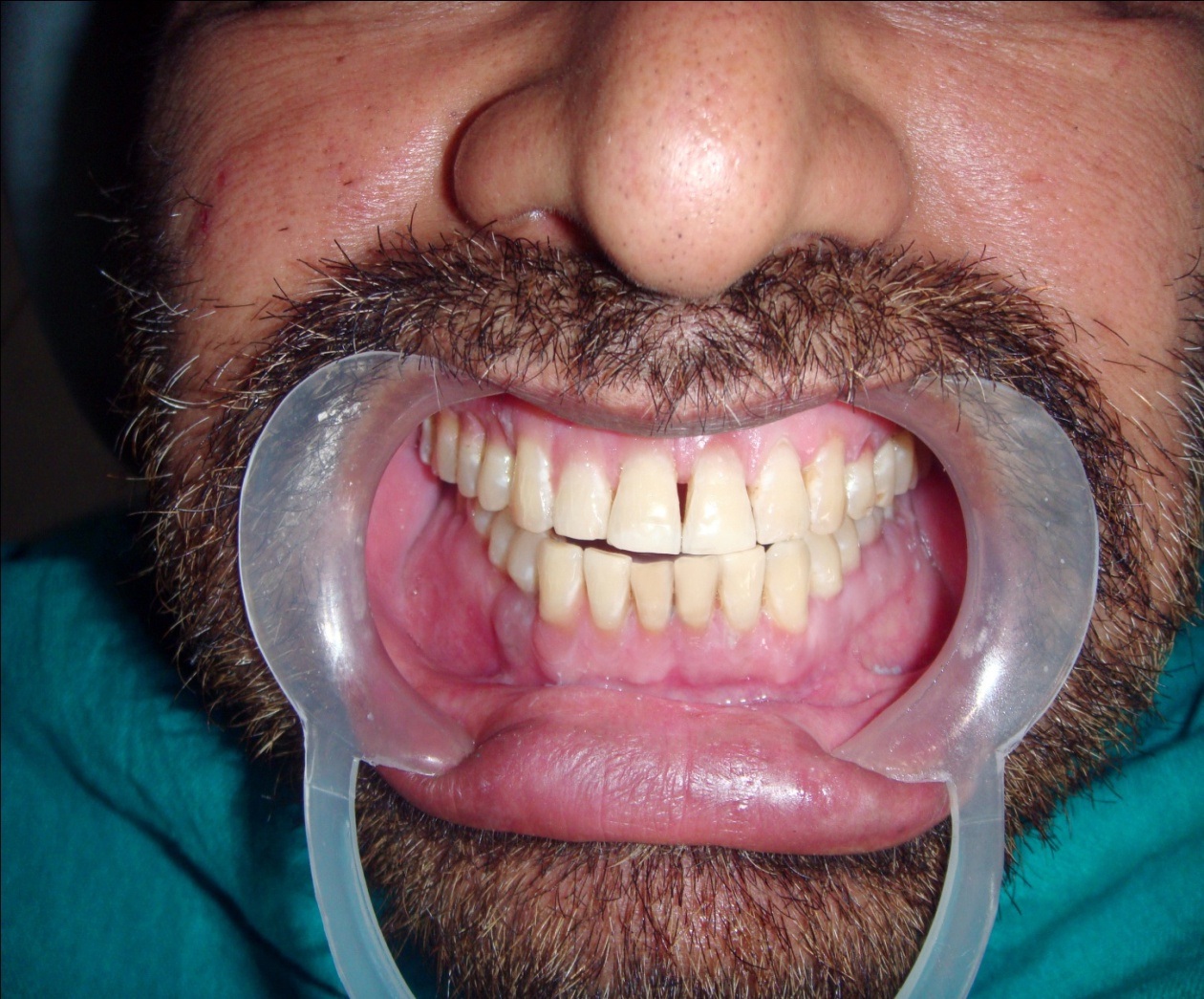
1. Surgical methods
These include:
a. Pedicle grafts.
b. Coronally positioned grafts.
c. Free-autogenous soft tissue graft.
d. Combination of one or more techniques.
However surgical procedures have disadvantages such as additional donor site, pain, esthetically less pleasing result at graft site, limitation of surgical procedure to small area, time consuming, technique sensitive and excessive cost [4].
2. Non surgical methods [
5,
6]
a. Restoration with gingiva colored porcelain laminate, veneers [7,8].
Although color of these restorations is acceptable, but it requires tooth preparation and hence hard tissue loss. Moreover two appointments are required for the procedure.
b. Gingival prosthesis
Although aesthetically pleasing, patient compliance is essential and maintenance of prosthesis is required.
c. Composite resin/GIC restoration
They are commonly practiced to overcome sensitivity associated with gingival recession. However, overall result is an unaesthetic long tooth appearance. Gingiva colored composite resins has been tried as an alternative treatment approach, but these are available in limited shades.
The present study has used ceramic tints to get the exact shade of the lost gingival tissue that may be difficult to achieve with composite shades alone. In this method, no elaborate laboratory procedures are required and chemically stable shade was attained. The present method is easy, in-office and a cost effective procedure, provides acceptable results in cases with gingival recession.
[1]. Gorman WJ, The prevalence and aetiology of gingival recessionJ Periodontol 1967 38(4):316-22. [Google Scholar]
[2]. Goldstein M, Brayer L, Schwartz Z, A critical evaluation of methods for root coverageCrit Rev Oral Biol Med 1996 7:87-98. [Google Scholar]
[3]. Kassab MM, Badawi H, Dentino AR, Treatment of gingival recessionDent Clin North Am 2010 54(1):129-40. [Google Scholar]
[4]. Hou LT, Yan JJ, Liu CM, Huang JF, Jehing SM, Wong MY, Treatment of gingival recession- literature review of current progressChina Dental Journal 2005 24(2):71-78. [Google Scholar]
[5]. Parolia A, Thomas MS, Kundabala M, Shetty N, Gautam S, Kumar S, Rehabilitation of gingival architecture by a conservative method: an innovative approachJ Conserv Dent 2008 11(3):131-35. [Google Scholar]
[6]. Zalkind M, Hochman N, Alternative method of conservative esthetic treatment for gingival recessionJ Prosthet Dent 1997 77(6):561-63. [Google Scholar]
[7]. Capa N, An alternative treatment approach to gingival recession: gingiva-colored partial porcelain veneers: a clinical reportJ Prosthet Dent 2007 98(2):82-84. [Google Scholar]
[8]. Carvalho W, Barboza EP, Gouvea CV, The use of porcelain laminate veneers and a removable gingival prosthesis for a periodontally comp—romised patient: a clinical reportJ Prosthet Dent 2005 93(4):315-17. [Google Scholar]